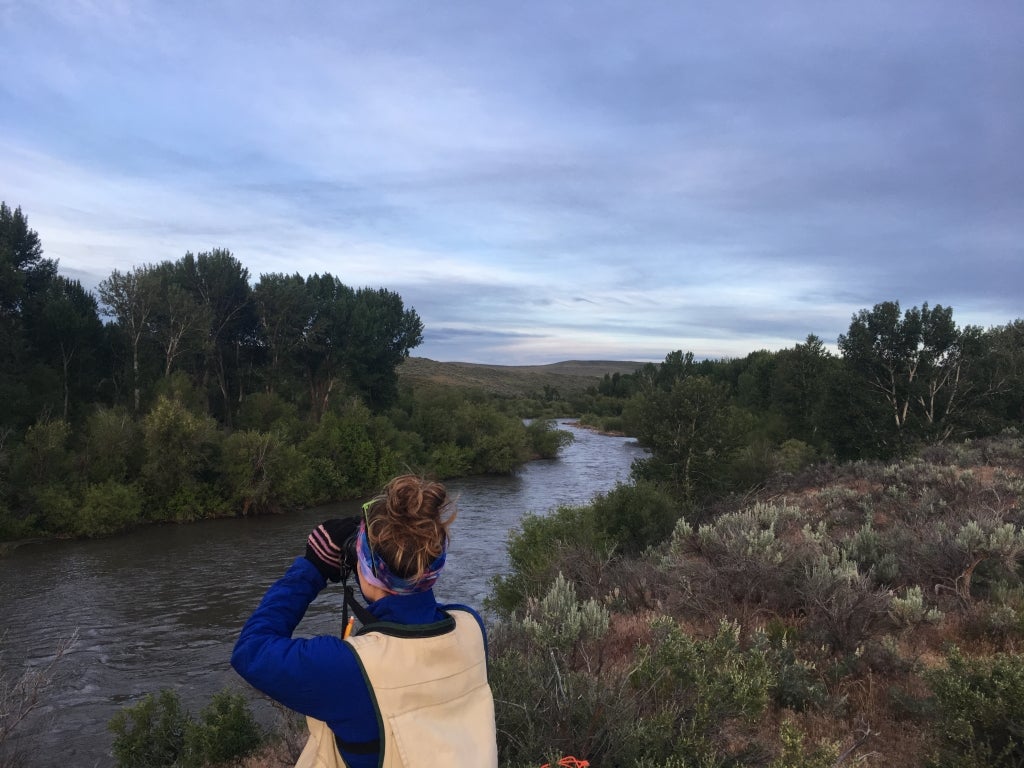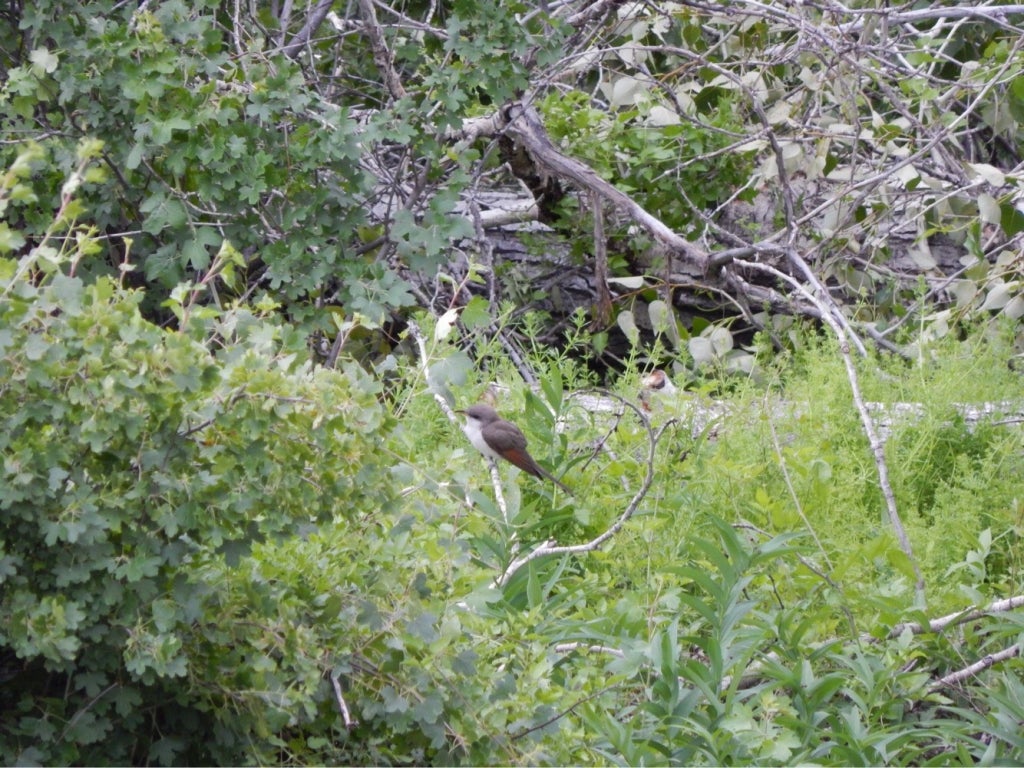If you asked a room full of birders, biologists, and researchers alike this question “How many of you have seen a Yellow-billed Cuckoo in Idaho?”, probably only one or two hands would raise, and the rest of the room would roll their eyes and sigh in an expression of their desire to see one of these elusive birds. So what is the deal with cuckoos?

The western population of Yellow-billed Cuckoos is recognized as genetically distinct from the eastern population and has declined dramatically in size and range extent since the 1950’s. This decline is mostly due to loss of large cottonwood galleries and riparian habitat. This population was listed as threatened under the Endangered Species Act in November of 2014. Yellow-billed Cuckoos are more commonly encountered in southwestern states like California, Arizona, and New Mexico. Idaho represents the more northern extent of their range and the status of cuckoos in Idaho is not clear.
In 2017, IBO received a contract to conduct surveys for Yellow-billed Cuckoos within the Bureau of Land Management’s Shoshone Field Office. This area contains a large swath of U.S. Fish and Wildlife Service Proposed Critical Habitat, as well as other potentially suitable habitat for Yellow-billed Cuckoos. To conduct these surveys, we applied for and obtained a U.S. Fish and Wildlife Service federal permit allowing us to use playback (broadcast of cuckoo vocalizations) to survey for these rare birds. It is important to note that only people specifically permitted can use playback to detect cuckoos.
A small crew, lead by Tempe Regan, with assistance from Jay Carlisle (IBO Research Director), Jeremy Halka (IBO Research Biologist), and Idaho Fish and Game biologist Ross Winton and his technician Austin Young, were able to survey 19 sites completely, visiting them four times, each visit two weeks apart, from June 15 to August 15. Most of the surveys were in the Little and Big Wood River drainages. Overall, they surveyed a total of 197 points, four times, for a total of 788 individual survey points for cuckoos. Although they spent hours, days and months looking for cuckoos, they only detected a Yellow-billed Cuckoo on just three of 788 individual survey points and at one of 19 sites. All of the Yellow-billed Cuckoo detections occurred on the same day at the same site!
The first cuckoo!
On the first day of cuckoo surveys, Jay looked at Tempe and said “So, do you think you are going to get a cuckoo this summer?”. She laughed and replied “Yeah, one!”.
Just minutes later, on June 16, 2017, they detected a Yellow-billed Cuckoo at point five of that morning’s survey!
They heard the bird giving the typical “kowlp” contact call after the second sequence of broadcasts had just ended. Tempe and Jay looked at each other in disbelief and mouthed “no way, did you just hear that!?” almost simultaneously. Eventually, they were able to see the bird before it flew away and estimated it was just 20 meters from them!
After they calmed down and had collected the necessary data, they moved to the next survey point (point six), and again detected a Yellow-billed Cuckoo – first as it silently flew in from the southeast, and then when it gave the “kowlp” call from across the river. Finally, at the last point (point eight) of the site, they detected a Yellow-billed Cuckoo again giving the “kowlp” contact call, and then observed it feeding ~ 34 m away. It made for an exciting morning and believe them when they say a Yellow-billed Cuckoo hunting for caterpillars is a cute sight indeed!
However, they had no idea how right Tempe was when she predicted it would be downhill from there. Sadly, this proved to be true and they did not detect another cuckoo at this site or at any other site for the rest of the season!

We cannot determine with certainty the actual number of cuckoos detected during the morning of June 16, as it may have been just one cuckoo following them along. Most likely, they detected a migrating cuckoo because that detection was during their first and earliest visit to the site (when cuckoos are still migrating, especially into the northernmost extents of their range – i.e., Idaho).
Next year, we hope to continue standardized surveys for cuckoos in the BLM Shoshone Field Office and potentially expand the areas to be surveyed. We also may begin work to find funding to research other aspects of the biology of these seldom-seen, but often-sought-after birds.